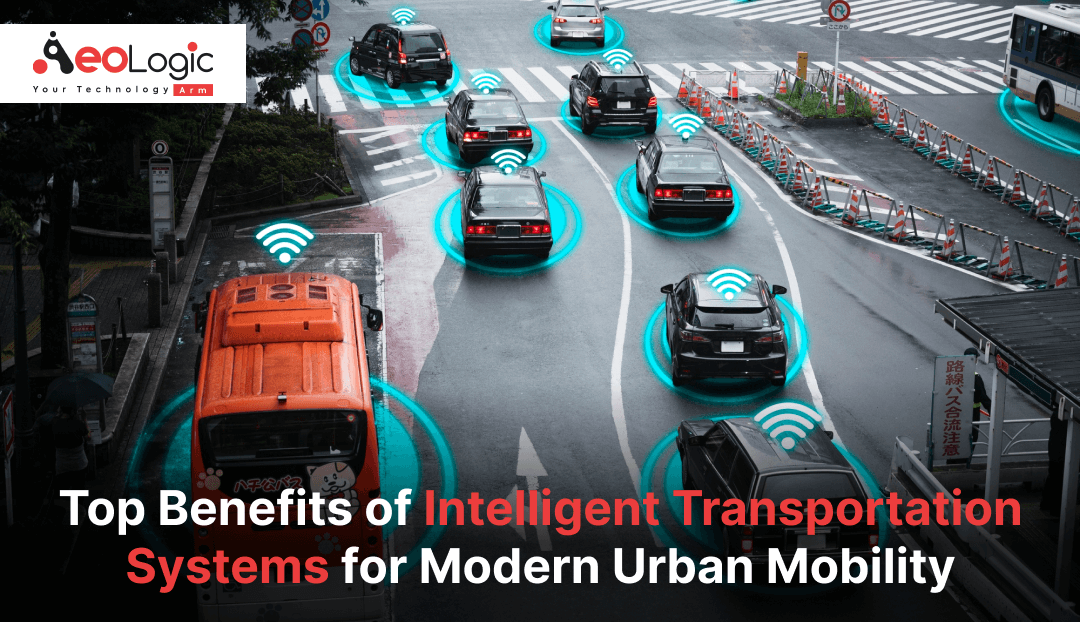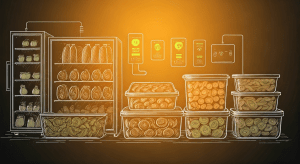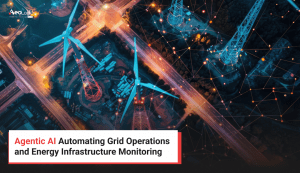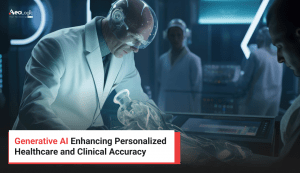As more cities enter the digital age, urban planners and authorities are constantly looking for new and developing technology to help them run their societies more effectively. This is especially true for transportation, which is why intelligent transportation systems have become an essential component of any expanding Smart City. These technologies in transportation provide unlimited application options. They offer a smarter alternative to existing transportation networks. It improve efficiency, safety, and security while tackling typical transit challenges such as congestion.
Leveraging Intelligent Transportation Systems is regarded as critical to ensuring effective urban mobility, which is why so many countries have begun or are planning to adopt it in the coming years. Let’s take a closer look at what an Intelligent Transport System is, how it works, and what are the top benefits of intelligent transportation systems for modern urban mobility.
What is an Intelligent Transport System?
An Intelligent transportation system (ITS) is a component of the Internet of Things (IoT), which incorporates vehicle-to-vehicle (V2V) and vehicle-to-infrastructure (V2I) technology. ITS utilizes both wireless and wireline communication methods, along with information and electronics technologies. Information Technology Systems (ITS) are primarily utilized in transportation and traffic management systems to enhance the safety, efficiency, and sustainability of different transportation networks. They are also employed to mitigate traffic congestion and improve the overall user experience.
Intelligent Transport System comprise cutting-edge wireless, electronic technologies that function through automation. Collectively, these technologies have the capacity to unify many modes of transportation. This includes trucks and personal automobiles, and other infrastructures. Automated in-vehicle technologies and automation enable precise docking of buses, and accident avoidance systems. Automated in-vehicle technologies and automation enable precise docking of buses, as well as automated guideways and accident avoidance systems. The system relies on several apps and sensors to process and exchange information, connecting vehicle data and location with other vehicles, pedestrians, bikers, and local or remote infrastructure linked to a cloud.
Intelligent Transport Systems for Modern Urban Mobility is already exerting a substantial influence on the transportation sector through the implementation of many applications, including electronic toll collection, ramp meters, traffic light cameras, traffic-signal coordination, transit signal priority, and traveler-information systems. Implementing these systems with Aeologic offers numerous advantages for both the general public and commercial customers, as well as a diminished environmental footprint and economic profit.
Also Read: The Impact of Emerging Technologies on the Transport System
How do Intelligent Transportation Systems for Modern Urban Mobility Work?
Intelligent Transportation Systems might vary based on their goal, but the fundamentals of their operations remain consistent. Developers of such advanced technologies uses best technology such as computer vision, deep learning, edge computing, IoT, and others to produce solutions. An ITS model often consists of several stages. They are data gathering, annotation, analysis, training, and testing of AI models. The most popular uses include speed control, capacity management, higher efficiency and safety in multimodal travel, reduced fuel consumption, and improved incident management.

5 Intelligent Transportation Solutions for Modern Urban Mobility
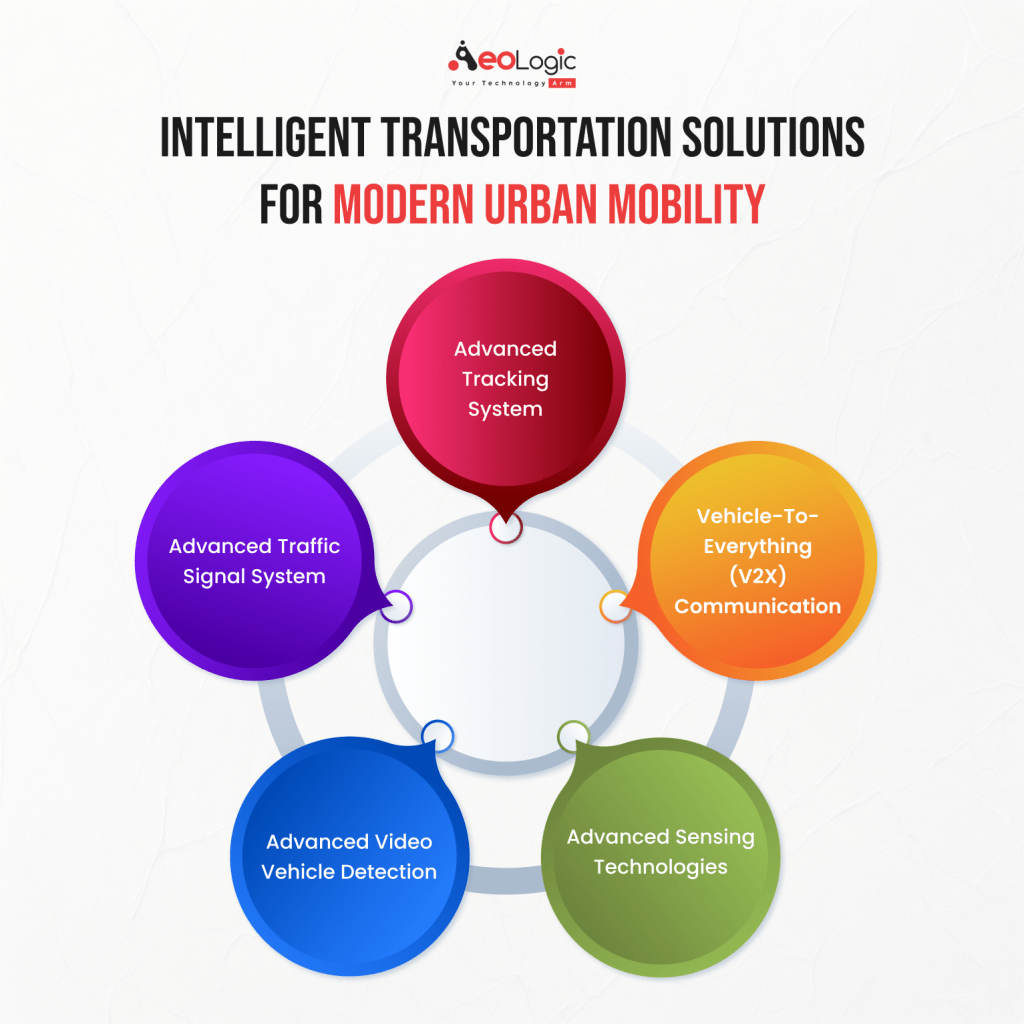
Advanced tracking system: The integration of GPS, in-vehicle communication systems, and advanced driver assistance systems (ADAS) enables two-way communication and assists traffic professionals in locating vehicles, checking for speeding, and providing emergency services. By incorporating IoT solutions, traffic management centers can immediately acquire visibility and receive alerts on hot spots or city-wide concerns affecting traffic congestion, public safety, and emergency response systems. This allows them to act and communicate more effectively with other agencies and responders, enhancing overall operational efficiency and response times.
Vehicle-to-everything (V2X) communication: V2X communication creates connected surroundings for smart city mobility. V2X contributes to traffic safety (traffic jam/accident reporting, collision warning, and collision avoidance), cooperative autonomous driving (traffic information exchange), entertainment services, and a variety of additional applications in the framework of intelligent transportation systems.
Advanced sensing technologies: Advanced sensing technologies include intelligent vehicle and road infrastructure sensors. RFID solutions by Aeologic and intelligent beacon detection technology help to keep drivers safe in cities across the world. The road has reflectors and induction loops, which are especially important for traffic control and nighttime driving safety. It can also distinguish slow and rapid vehicles, providing data on vehicle density over time.
Advanced video vehicle detection: Video surveillance can help solve a variety of traffic concerns. Video analytics is useful for monitoring traffic flow and identifying crises and road bottlenecks. It also supports automatic license plate recognition, which improves security.
Advanced traffic signal system: The use of radio frequency identification (RFID), advanced algorithms, and traffic databases reduces the need for manual modifications during critical traffic conditions or peak hours.
Benefits of Intelligent Transportation Systems for Modern Urban Mobility
- Satisfies the accessibility and mobility needs of persons who live and work in a community or utilize public transportation.
- Provides a variety of accessible and cheap transportation options while making the greatest use of existing infrastructure.
- Controls congestion and incidents to ensure that road users receive a decent level of service.
- Provides a technique to reduce air pollution and noise from road vehicles, hence improving public and environmental health.
- Promotes a thriving economy and efficient transportation of commodities and freight.
- Provides a method for putting transportation policy into action, such as demand management or prioritizing public transportation.
- When a crash occurs, ITS can detect the location of the incident and issue instant warnings to other cars in the area. This may lessen the likelihood of secondary accidents and enhance emergency response time.
- An ITS improves people’s life by delivering accurate and timely traffic information, real-time running information, seating availability, and other services.
- ITS can effectively reduce fuel consumption by facilitating optimal travel routes. It consider all aspects of planning and timing, as well as better control of accelerations/decelerations and stopping, thereby reducing time spent idling, when applied to the system management of vehicles, highways, and transit.
- Intelligent Transportation Systems capture a variety of data from cars and infrastructure. This data is then examined and used to control flow in a way that maximizes capacity and efficiency. This function is especially useful for enterprises where even minor delays can be costly.
- Future infrastructure choices can also be based on the information from ITS, particularly on the construction of new roadways. Thus, there are just unlimited possibilities!
Also Read: Information Technology to Support the New Values of the EV
Final Words: Intelligent Transportation Systems for Modern Urban Mobility
According to a United Nations report published in May 2018, “55% of the world’s population lives in urban areas, a proportion that is expected to increase to 68% by 2050.” The increase in urbanisation is putting a pressure on cities and their infrastructure, with the number of vehicles per family increasing. In the United States, the average number of vehicles per household was 1.88 in 2017 (source: Statista), and it has become increasingly vital for communities to consider smart solutions to traffic congestion, both for privately owned vehicles and public transportation.
An Intelligent Transport System (or Smart Transportation System, as they are sometimes referred to) is, as the name implies, an intelligent way for transport authorities to collect, analyze, and present data to users of a transportation network on the current status of the network, allowing them to plan their journey based on real-time data.
Data gathering and analysis also enable transport agencies to make educated decisions about strategy and planning for their transportation networks, thereby improving long-term sustainability and accommodating traffic growth.
Related Blogs:
- How AI/ML Can Change the Public Transportation Industry
- Transforming Business With Digital Technology in the Oil Palm Industry in India
- Importance of Digital Asset Management in the Retail Industry
- How AI is Transforming the Agriculture Industry
- 10 Ways to Use Artificial Intelligence to Improve Business Processes
- The Future of IoT Technology in Convenience Stores
- Building Manufacturing Resilience Through AI and ML

